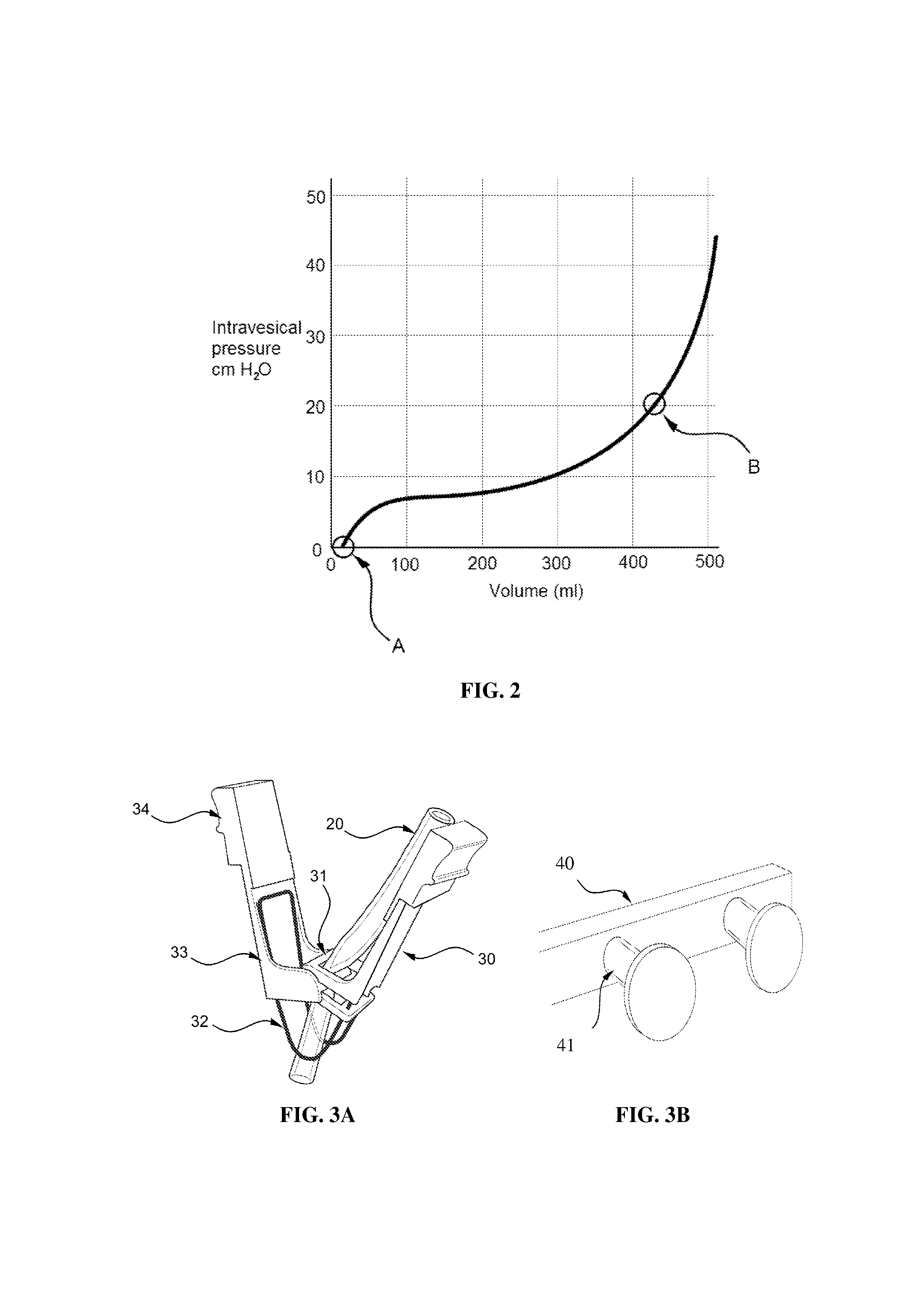Context-sensitive flow interrupter and drainage outflow optimization system
a technology of interrupter and interrupter, which is applied in gravity drainage system, medical science, other medical devices, etc., can solve the problems of urinary catheters contributing to urinary tract infections, preventing 100% of urine from going backwards, and infection and patient discomfor
- Summary
- Abstract
- Description
- Claims
- Application Information
AI Technical Summary
Benefits of technology
Problems solved by technology
Method used
Image
Examples
embodiment 1
[0137]2. The apparatus , wherein the flow interrupter comprises a clamp, stopcock, or cuff.
[0138]3. The apparatus according to embodiment 1, wherein the flow interrupter comprises a normally closed clamp capable of bringing a first portion of an interior wall of a drainage tube in contact with a second portion of the interior wall of the drainage tube such that fluid is inhibited from passing through the flexible drainage tube, wherein interacting the normally closed clamp with the holder portion causes the normally closed clamp to open.
embodiment 3
[0139]4. The apparatus , wherein the normally closed clamp comprises a jaw-opening spring clamp having two arms extending from the spring clamp and the holder portion can comprise one or more brackets or rods defining a receptacle for the jaw-opening spring clamp, the receptacle having a diameter or opposing sidewall spacing smaller than a distance between the distal ends of the two arms, wherein insertion of the jaw-opening spring clamp into the receptacle causes the distance between the distal ends of the two arms to decrease, thereby opening the jaw-opening spring clamp.
[0140]5. The apparatus according to embodiment 3, wherein the normally closed clamp comprises a resilient deformable material on or within the section of the drainage tube, wherein the resilient deformable material causes the section of the flexible drainage tube to be in a collapsed position until interacted with the holder portion.
[0141]6. The apparatus according to embodiment 1, wherein the holder portion is co...
embodiment 7
[0143]8. The apparatus , wherein the mechanical template comprises a peg, groove, or bracket assembly.
[0144]9. The apparatus according to embodiment 7, further comprising a drainage collection bag holder affixed at one end of the mechanical template for hooking the drainage collection receptacle thereto.
[0145]10. A drainage assembly comprising: a drainage tube having a pressure equalizing vent, and a drainage collection bag connected to the drainage tube.
PUM
 Login to View More
Login to View More Abstract
Description
Claims
Application Information
 Login to View More
Login to View More - R&D
- Intellectual Property
- Life Sciences
- Materials
- Tech Scout
- Unparalleled Data Quality
- Higher Quality Content
- 60% Fewer Hallucinations
Browse by: Latest US Patents, China's latest patents, Technical Efficacy Thesaurus, Application Domain, Technology Topic, Popular Technical Reports.
© 2025 PatSnap. All rights reserved.Legal|Privacy policy|Modern Slavery Act Transparency Statement|Sitemap|About US| Contact US: help@patsnap.com



